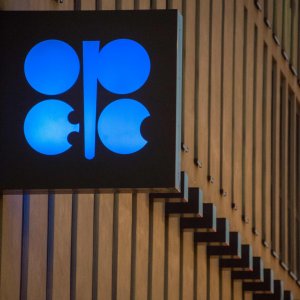Oil traders have finally given up on an early rebalancing of the crude market. with flat prices and calendar spreads plunging to the lowest level since OPEC’s agreement was announced.
OPEC has lost control of the oil market narrative. after successfully shaping it in an informal alliance with hedge funds in the last part of 2016 and the first few months of 2017.
Controlling the narrative provides an important source of short-term influence over prices (“Narrative economics”. Presidential Address to the American Economic Association. Shiller. 2017).
Senior OPEC and non-OPEC officials have dropped strong hints that current production cuts will be extended for a further six months. but oil traders seem increasingly sceptical about the effectiveness of prolonging the curbs until the end of 2017.
Brent prices for the futures contract nearest delivery closed at $48.38 per barrel on Thursday. the lowest since Nov. 29. the day before OPEC’s last meeting.
Brent calendar spreads for the six months from July 2017 to January 2018 fell to $1.19 contango. which was also the lowest since Nov. 29.
The informal understanding on market rebalancing between OPEC and some of the most important hedge funds reached late last year finally unraveled this week.
OPEC committed to implement credible and transparent production cuts and to reduce global crude stocks while hedge funds responded by establishing long positions in both flat prices and calendar spreads.
The initial results from the understanding were positive for both sides. with hedge funds establishing a record bullish position in crude by the middle of February and futures prices rallying.
Brent’s flat price rose by around $10 per barrel. or more than 20 percent. and the market structure swung from contango into backwardation.
But flat prices and spreads have been progressively softening since the second half of February (“Hedge fund confidence in OPEC starts to fray”. Reuters. April 20).
Global crude inventories have not fallen as fast as OPEC or the hedge funds anticipated. putting the understanding under pressure.
Market expectations for a normalization of crude stockpiles have been pushed back from the first half of 2017 to the second half or even into 2018.
The gradual weakening of both flat prices and calendar spreads in recent weeks has inflicted substantial losses for many bullish hedge fund managers.
In the last two to three weeks. many bullish hedge funds seem to have finally given up waiting for a short-term turnaround and decided to cut their losses (“Hedge funds lose faith in OPEC”. Reuters. May 2).
Hedge funds cut their overall bullish position in futures and options linked to Brent and WTI by 139 million barrels in the week to April 25. according to positioning data published by regulators and exchanges.
The draw down was among the largest on record but still left the hedge funds with a relatively large overall bullish position equivalent to 643 million barrels on April 25.
The continued fall in prices since then. and the rout on Thursday. suggest the draw down has continued. though the full extent will not be revealed until the new position is published over the next 10 days.
Falling prices and the confirmed break down through previous support levels around $50 also likely encouraged fresh short selling by hedge funds pursuing momentum-based strategies.
Turnover in front-month Brent futures hit a record 542 million barrels on Thursday which is consistent with heavy long liquidation and fresh short sales as well as lots of short-term computer-driven trading activity.
The liquidation of so many speculative long positions and establishment of fresh short ones should eventually help stabilize crude prices.
From a positioning perspective. the balance of risks for oil prices now looks more even than it has for some time. given the squaring up of the large hedge fund overall long position.
The outlook may even have become slightly positive given the large number of short positions likely to be have been established in recent days which will have to be bought back at some point.
Oil prices may bounce on their own. But if they do not. the challenge OPEC and non-OPEC producers heading into another meeting on May 25 is how to wrest control of the narrative back from the short-sellers.

 Iran Energy News Oil, Gas, Petrochemical and Energy Field Specialized Channel
Iran Energy News Oil, Gas, Petrochemical and Energy Field Specialized Channel



